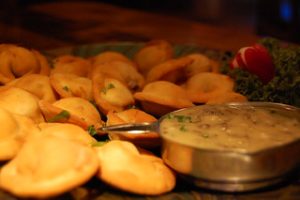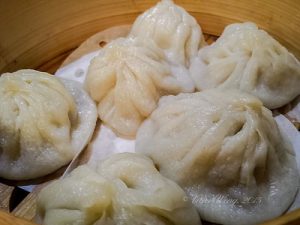Welcome back! This week I have decided to look into Russian cuisine. Russian cuisine is rich in carbohydrates. Russian food is usually made with very simple ingredients but is also very comforting in the cold winter months and refreshing in the hot summer months.
One of the most traditional Russian foods internationally is Borscht. Borscht is a red beetroot soup. This soup often contains meat, potatoes, carrots, and tomato. However, there are many variations of this soup based on location that may contain other ingredients. Borscht is traditionally eaten with dill or sour cream. Borscht can also be eaten hot or cold, hence why it is a go-to dish for both winter and summer.
Another internationally recognized dish is Beef Stroganoff. This dish is made with finely sliced beef fillet, onions, and mushrooms. The ingredients are all sauteed in white wine and sour cream. This dish has a variety of origin stories, but they all place beef stroganoff being created in the 19th century. Similarly to borscht, beef stroganoff has a lot of varieties around the world depending on where a person is.
Solyanka soup is another warm soup dish to help keep someone warm in the winter. This soup is a combination of sweet and sour. This soup usually contains a mix of fresh and cured beef, pork, and occasionally chicken. These ingredients is what is believed to give solyanka its different taste. Some other ingredients commonly used include pickled cucumbers, capers, olives, tomatoes, onions, parsley, and dill.
Between countries/cultures there are some similarities between traditional foods. For example, Blini in Russia are very similar to French crepes. A significant difference between the two is that Blini is made with yeasted dough, which in exchange makes them lighter. Blini often contains a mix of sweet and savoury fillings. Some fillings include ground meat, egg salad, and sweet cottage cheese. The most well-known companions to Blini are caviar, sour cream, and honey. Russians even celebrate their love for these pancakes by having a pancake week called Maslenitsa held every year, where Russians can celebrate their love for pancakes.
Something new to me that I have never tried is cold soup. I have always envisioned soup being a warm, comforting dish and not a cold dish for a hot summer day. Okroshka is a traditional cold soup in Russia. This soup often contains boiled meat or bologna, radish, cucumbers, scallions, boiled potatoes and eggs, and is served with dill and sour cream. There are also meatless types of Okroshka that are popular in Russia. Okroshka is often served with kvass, which is a drink made from fermented bread. If Okroshla is not served with kvass, it is often served with kefir or mineral water.
The final dish that I will be discussing has managed to find its way into the heart of Russian cuisine. This dish is called Pelmeni. Pelmeni has been a dish in Russian cuisine for a very long time. This dish is essentially tiny dumplings that are usually stuffed with either lamb, pork, or beef or all three combined. What makes them so special is the thinness of the dough. This dish is very time consuming and is often cooked for special occasions. Pelmeni is always served with sour cream, and can be served with or without broth.
Thank you for reading my blog! Next week, I will be discussing Chinese cuisine.
(Solyanka Soup) (Pelmeni)


Attributions:
“Soljanka Suppe mit geräuchertem Fleisch und Kräutern, in einer weißen Schale, im rustikalen Setting mit Baumstamm und Leinentuch” by Marco Verch is licensed under CC BY 2.0.
“pelmeni” by stu_spivack is licensed under CC BY-SA 2.0.
Information:
https://theculturetrip.com/europe/russia/articles/15-traditional-meals-that-remind-russians-of-home/
Photo by Michael Parulava on Unsplash












